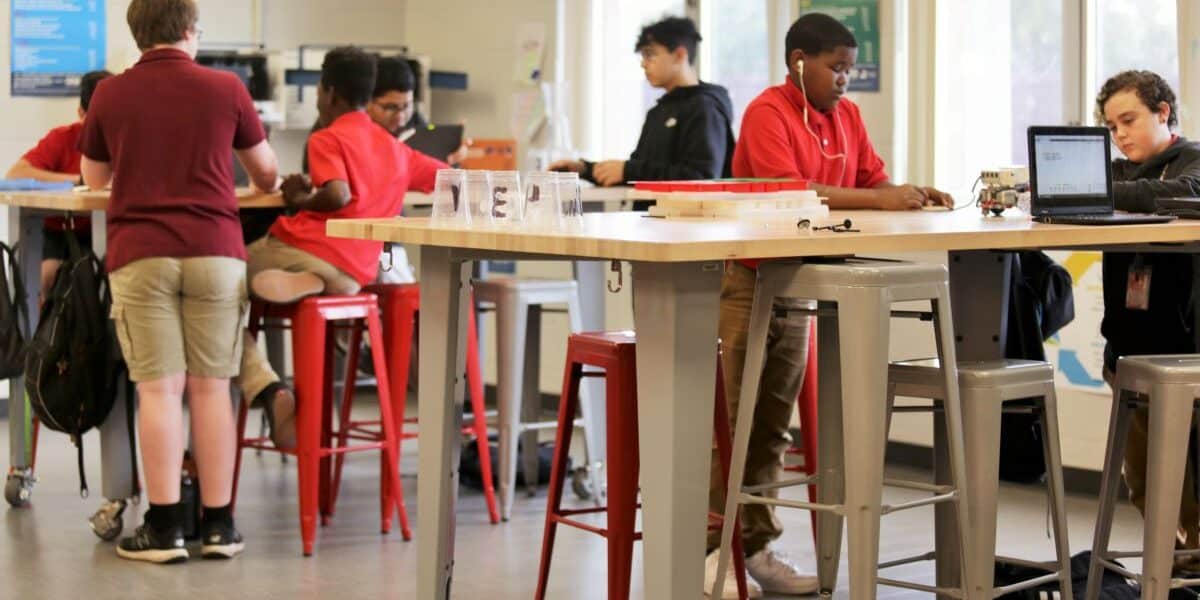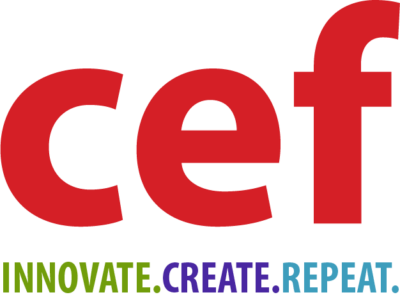By Nichol Lancaster
Makerspaces made their debut around 2005, but the concept has been around for many years.
In the late 1800s, women would collaborate while making quilts, knitting, and sewing and study each other’s techniques and discuss books they had read while making the quilts.
It can also be found when Wilbur and Orville Wright collaborated and introduced planes as a vital part of our lives today. Neither brother finished high school, and Orville was the first to be airborne after winning a coin toss.
It can also be found when Anna Stork and Andrea Shresta created an inflatable, waterproof, and solar-powered light that has aided in multiple disaster relief efforts across the world.
And, finally, on a lighter note, when Ben Cohen and Jerry Greenfield brought chunks, texture, and rich yummy flavors to the ice cream game!
In all these techniques and inventions, collaboration and active learning played a key role, and this is why “learning-by-doing” is so essential for our children today.
What Is a Makerspace?
I was immediately intrigued by the concept of a makerspace when I first learned of it in 2015. Although the term and physical creation of a makerspace had been around for quite some time, it was just catching on in schools.
As a mother of four non-traditional, hands-on learners, I wanted to know more about them and what might speak to my children and aid in their education. My career in furniture development for schools allowed me to dig into the subject while also being able to visit multiple schools that had implemented this learning process as part of the curriculum.
I have witnessed all levels of making-cardboard creations, coding/robotics, construction, aerospace, circuitry, gardening experiments, and more.
I am frequently asked, “What exactly is a makerspace?” My response is simple: It’s hands-on, collaborative learning, and it can be anything you want it to be!
It’s a place where mistakes are okay. Simply, try it again.
There is no pressure around performance or grades, and there is no end-of-year test that determines how well you did.
In a makerspace, students create and make objects that are tangible and allow them to showcase their inner talents and gifts around many different areas.
In the STEM-focused makerspaces, a student’s time is centered around technology, such as 3D printing, coding, and electronics.
Whereas the non-STEM-focused centers, also known as CTE, focus on construction, culinary, sewing, and agriculture.
The real-world application for students learning these subjects can translate into passion-driven careers rather than societal expectations and heading off to college with little to no direction around their gifts and passion to earn a living.
Real Results
My parents are missionaries to Guatemala, and that has been a part of our family since 1990. They run a prosthetics clinic that serves patients twice per year. Year after year, my father has been in the lab for days at a time forming each prosthesis per patient.
However, in recent years, 3D printing has made an incredible impact on efficiency and consistency for each prosthesis. It has allowed my parents to see more patients, effectively helping more lives.
The world of 3D printing has changed so many areas of our lives, thus creating the need for more students to understand and become interested in it.
In another example, the company I work for recently provided large working tables for a school in Texas that has a lab where they are teaching their students to build a tiny house.
Upon completion, the school then donates to a family in need or auctions it off to support the program. This is an amazing opportunity for these students to learn a trade while also giving back.
When students learn coding, they are exploring career paths into mobile app development, web developer, software developer, and other career fields that make major impacts in our daily lives.
Another favorite that our company has been a part of is a fully functional FAA-approved aviation lab along with an interactive innovation Science, Technology, and Entrepreneurship incubator.
This gives students hands-on experience with drones and flight simulators, while also allowing students visibility into real-world applications.
This same lab is also challenging the students to think outside of the box to create new mock-businesses as well as solve existing problems in businesses. This is a place where students are encouraged to master their own destiny and spark curiosity around these career fields.
Finally, moving onto an example of agriculture and gardening, I had the pleasure of visiting a school that teaches their students the art of living through farming, art, and forestry. Every day is makerspace at this school.
From hands-on lessons and project work to walks through the woods between classes to at least one hour of unstructured forest time every day, visits to the Adventure Playground, to gardening, to animal care, to scientific inquiry in the creeks and on the trails, these students are on the move!
Through their hands-on programs, they also incorporate a well-rounded, robust writing, reading, math, and science curriculum.
The stories and student engagement from these programs have had amazing results and have boosted teacher morale in these areas of education unlike any other.
I was once told by a teacher, “This makes me fall in love with teaching all over again!” and “To see their face light up when they solve a problem, or create something, is the best day a teacher could ask for.”
Beyond the Classroom
Makerspace has certainly made an impact within the walls of educational institutions, even spreading into universities and public libraries.
But it has moved outside of educational institutions. There are now pop-up makerspaces at community events, in museums, and dedicated makerspaces within many communities across the country.
There are also theme parks that house makerspaces, and it was last estimated that there are over 2,000 throughout the country!
I must admit that when I discovered this movement, I thought it would eventually fade away like many trends do. However, I believe (and hope) that makerspace is here to stay, and its success will only continue to grow as we watch inventions and great ideas emerge from these spaces of freedom and innovation.
Happy making!
Nichol Lancaster is the director of business operations for CEF (Custom Educational Furnishings), a privately owned, Christian-based, educational furniture manufacturer located in Taylorsville, North Carolina, www.cefinc.com. All furniture is designed, engineered, and manufactured in-house in North Carolina as well as USA and local based suppliers are utilized.












